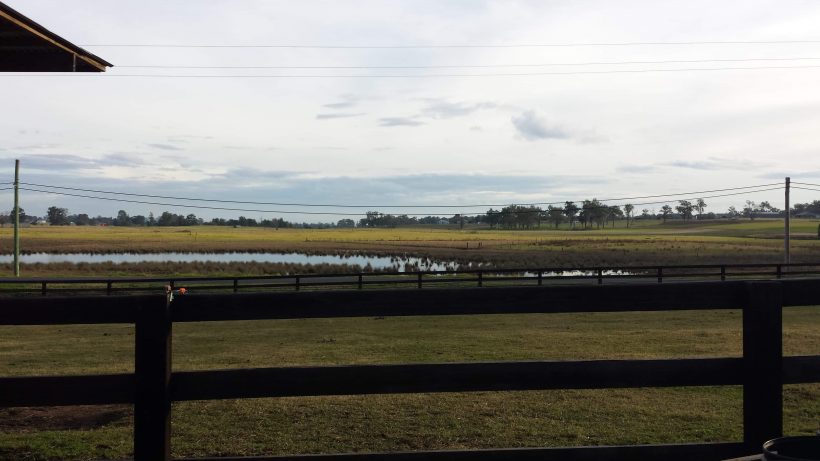Anyone on property with livestock knows the importance of quality fencing to both border the property, and subdivide to keep animals in desired areas. This is no different for people with Equines, and sometimes needing fencing that is safe enough for horses and donkeys, can be a little more on the expensive side. Quite often the fences need to be for Equines used for performance and/or breeding purposes, and they can occasionally get themselves caught in them. This is where smart thinking towards the type and quality of fencing materials used is required, to assist in hopefully preventing injuries from fences all together; or reducing the severity of any injury that may occur.
Below are three types of fencing typically used on equine properties. For each are suggested measurements, materials, advantages, disadvantages, and a bit on construction for all three.
Post and Rail Fencing

0.023m (2.3cm): Gap between rails. 1.2m: Height of the fence posts. 2.5m: Length of rail between each post.
Materials
- 1.2 m wood posts
- 2.5 m wooden rails
- Post caps
| Advantages | Disadvantages |
| Natural looking | Shrinkage and movement of the wood |
| Strong and long lasting | Some may need constant painting maintenance |
6 Strand Plain Wire Fencing

1.2 m: Height of fence posts. 2.5 m: Length of wire strands between each post.
Materials
- 1.2m steel posts
- Stays
- PVC clips
- Post caps
- Plain wire roll/s
| Advantages | Disadvantages |
| No painting required; so less maintenance | More installation labour with wire straining |
| Flexible for installation | High injury caused to horses who get stuck in it |
Mesh Fencing

1.2 m: Height of the fence posts. 0.1 m (10 cm): The height of each triangle in the mesh. 0.05 cm (5 cm): The width of each triangle in the mesh. 2.5 m: The length of the mesh between each post.
Materials
- 1.2 m steel posts
- Mesh roll/s
- Sometimes plain wire roll/s for a strand or two above the mesh.
| Advantages | Disadvantages |
| Galvanised finish ensures longevity – reduces the risk of rust | Unnatural look; so bolder aesthetic. |
| Rigid for horses but flexible for workers | Possible wastage from rolls |
Construction
For each of the above types of fencing, there are tools that are required to be able to construct them. The wooden poles require holes to be dug, and these can be dug with a drill implement on a tractor, a post hole digger or with some hard yakka with a good ol’ shovel. The steel posts need a post driver to get the posts in the ground. The plain wire strands require wire strainers, wire cutters, fence pliers, a come-along, and a fencing tool. Depending on the distance that needs fencing, quite a lot of time and effort may be required, and being able to accurately calculate the length/ amount of materials required will result in an effective spend of money. Professional fencers are quite often contracted to install fences on equine properties because of the large shear quantity needed, the quality expected, and the lack of time and effort to fence.
* Regardless of what type of fence and how the fence is installed, it will require careful monitoring to ensure maintenance isn’t needed, and quick repairs to ensure that the initial safety is upheld. Fences are a major investment, but they are absolutely essential and worthwhile to keeping equines safe and sound. *
Feature Image courtesy of Living Equine.
-Skye Pickering Dip. Horse Business Management.

